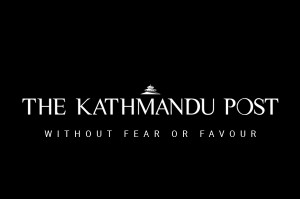Valley
Reconstruction of prominent temple inside Kathmandu Durbar Square finally begins
The reconstruction of Maju Dega, the three-story temple at the heart of Kathmandu Durbar Square area, formally started on Monday, three and a half years after the devastating earthquake damaged the monument of Malla era.
Anup Ojha
The reconstruction of Maju Dega, the three-story temple at the heart of Kathmandu Durbar Square area, formally started on Monday, three and a half years after the devastating earthquake damaged the monument of Malla era.
Kathmandu Metropolitan City (KMC) Mayor Bidya Sundar Shakya inaugurated the reconstruction work during a function attended by local officials and heritage conservationists.
The KMC has allocated a budget of Rs55.9 million for the reconstruction of the temple under Hanuman Dhoka Durbar Square Conservation Programme. Contractors Sanu Suwal and Pawan J.V have agreed to rebuild the historic temple, with a targeted deadline of October 21, 2020, to complete the work.
Addressing the inauguration, Shakya said the reconstruction task will be completed within the stipulated time. “This centrally located temple is a monument of faith for public. We have started the reconstruction work after consulting with the Department of Archaeology, and the locals will monitor the reconstruction work,” said Shakya.
He assured that the reconstruction work will be completed with KMC’s own investment. “We are not going to take aid from any foreign country for the temple’s reconstruction,” said Shakya.
Some of the monuments in Durbar Square have been rebuilt with foreign aid. The reconstruction of the nine-story Basantapur Tower at Kathmandu Durbar Square is funded by China. The quake-ravaged Gaddi Baithak in Basantapur Durbar Square was handed over on June 27 to the government after it was rebuilt with the support of US Embassy.
On October 14, KMC released Rs 50 million for the reconstruction of Kasthamandap. Prior to that, Shakya had allocated Rs5 million as seed money for the reconstruction of the wooden temple, a major attraction of Basantapur area.

The temple (left) before it was damaged by the 2015 earthquake.
Speaking at the programme, Deputy Mayor Hari Prabha Khadgi expressed confidence that all the monuments damaged by 2015 earthquake will be rebuilt within her tenure. “As elected representatives, we assure that we will complete the overall reconstruction of quake-damaged monuments before the end of our term,” said Khadgi.
Eleven monuments in the Durbar Square area were badly damaged by earthquake. The metropolis has also announced to work for the renovation of Kumari Ghar once the KMC gets structural analysis report on November 4.
Talking to the Post Cultural expert Beena Poudyal appreciated the work as a beginning of reconstruction work. “Constructing these historic monuments is a sensitive task and foreigners cannot build it in its original state. Though it is late, but the metropolis should carry the reconstruction work delicately because the artifacts are very important to us as it holds a lot of symbolic meanings,” said Poudyal.
The earthquake in 2015 extensively damaged 11 monuments in the Durbar Square. The metropolis has announced to renovate Kumari Ghar as well, once the KMC receives the structural analysis report on November 4.
Historic temple’s links with Malla Dynasty and modern era
A prominent royal member of the Malla Dynasty Riddhi Lakshmi, the Queen mother of Bhupetendra Malla, built the historic temple in 1692. Among the many notable features is the nine-step brick base that gives the temple an aesthetic look.
During the Hippie era in the 1970s, the historic monument was called ‘Hippie Temple’ because many Hippies from Europe and the US socialized around the area, particularly on the top step of the temple because it gave a panoramic view of the salubrious surroundings.
Legendary Indian actor Dev Anand had produced and directed ‘Hare Rama Hare Krishna’ the famous film released in 1971 whose plot revolved around gangs trafficking artifacts from temples of Kathmandu, the decadent Hippie culture and awareness on drug abuse.
The super hit film that was extensively filmed here showcased Maju Dega, Pashupatinath and other temples of Kathmandu to global audiences and also announced the arrival of Zeenat Aman as a star in the making. Veteran Nepali actor Prakash Thapa too played a key role in the film.
(All photos courtesy of Chandra Mani Bhattarai)




 6.84°C Kathmandu
6.84°C Kathmandu.jpg)











